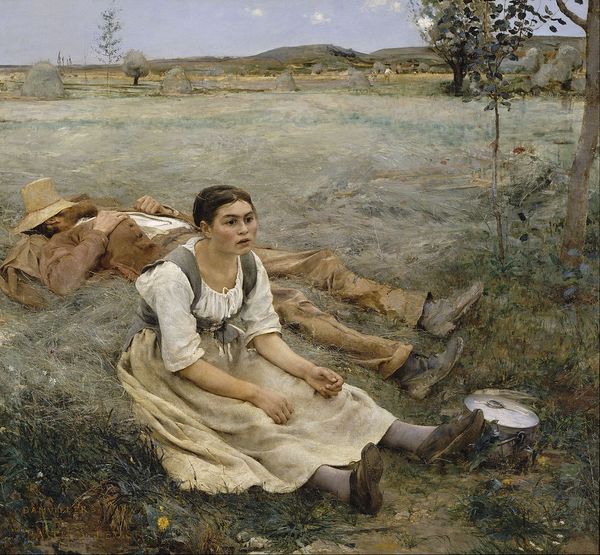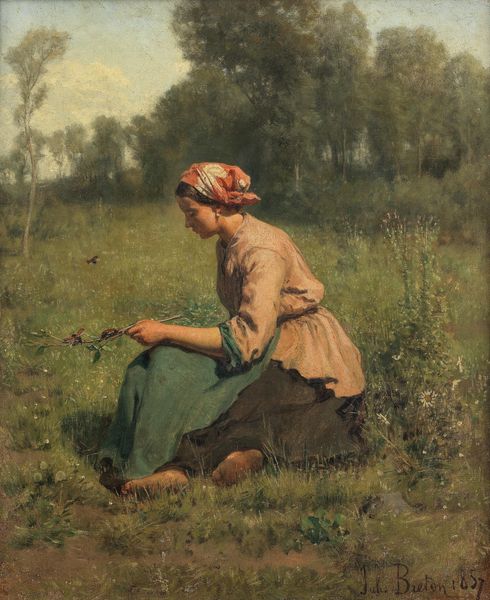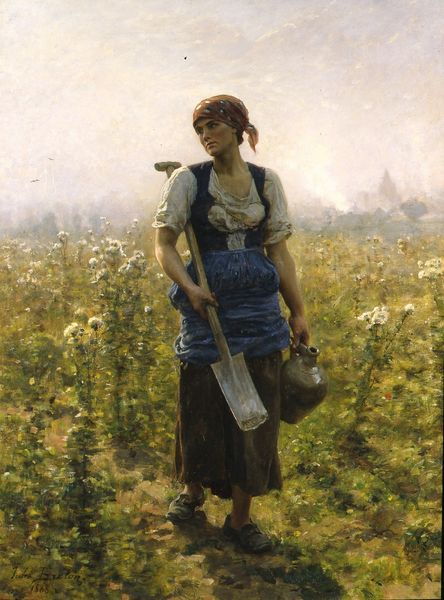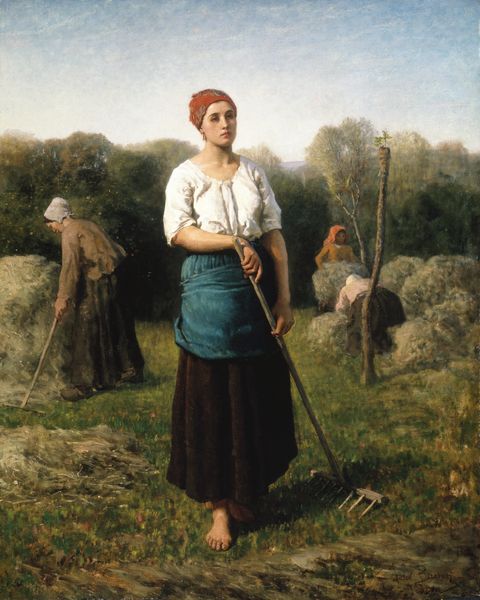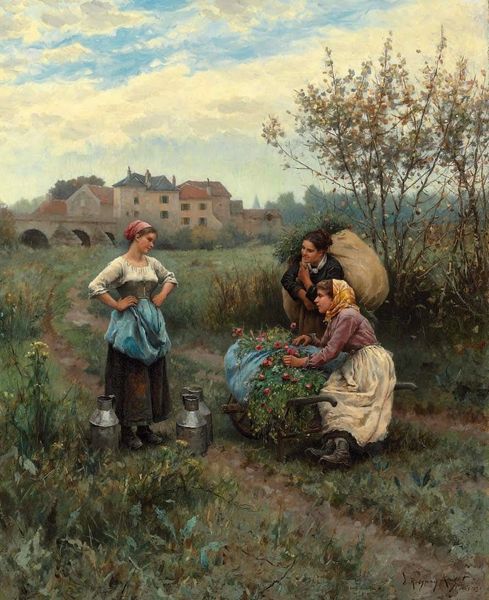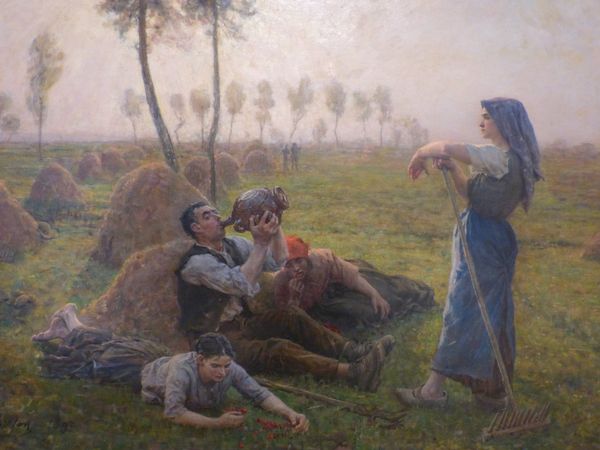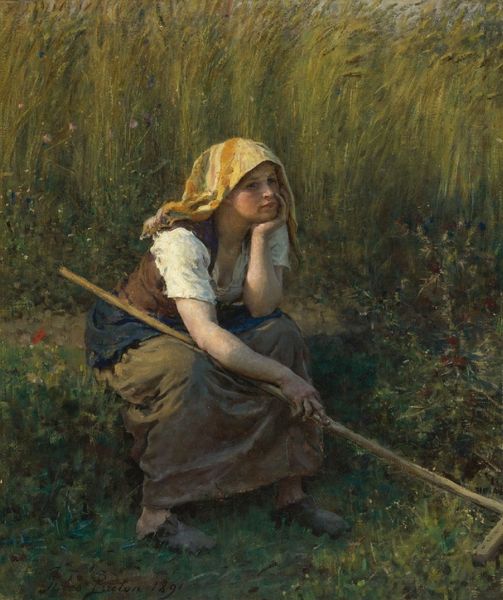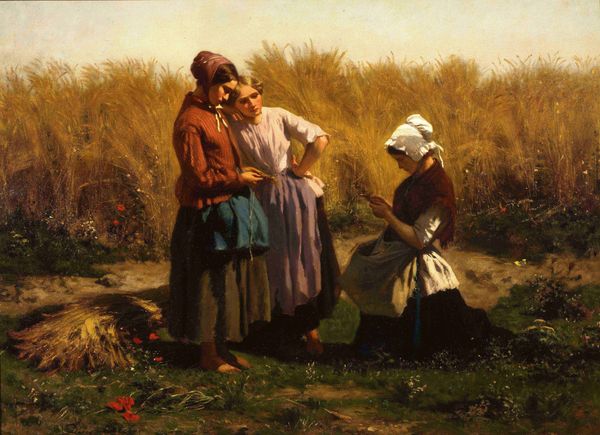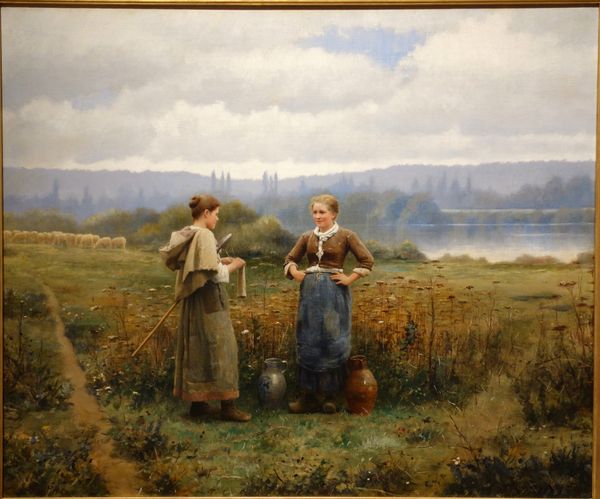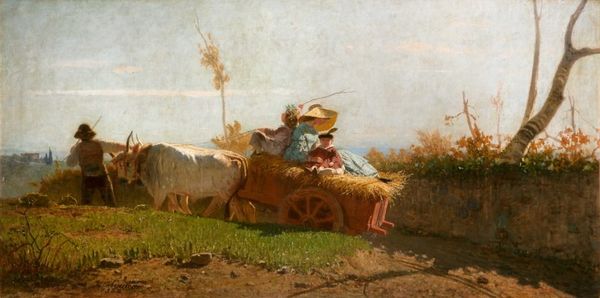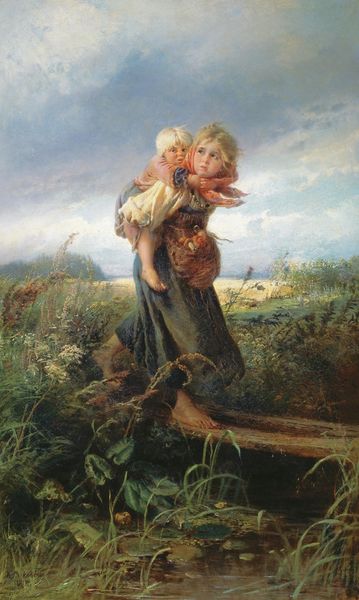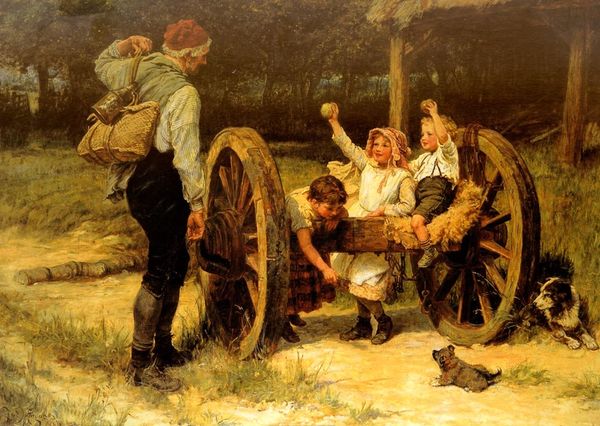
Dimensions: 129.5 x 165.1 cm
Copyright: Public domain
Editor: So this is Paul Peel's "Adoration," painted in 1885. It looks like an oil painting, depicting a mother and child in a field. It has a very tranquil and romantic feel. What can you tell me about it? Curator: On the surface, yes, it seems a rather quaint depiction of maternal love in a rural setting, conforming to many expectations of late 19th-century genre painting. But what are the underlying assumptions *about* that setting, that relationship? The 'peasant' mother, for instance – consider how her labor is both romanticized *and* rendered invisible. Where's the agency here? What kind of socioeconomic pressures are at play that aren’t revealed? Editor: I see your point. I was focused on the peaceful scene and didn't think about any potential underlying social critique. It seems so idealistic, almost saccharine. Curator: Exactly! Peel was working within very specific conventions, projecting particular values onto this subject matter. Ask yourself: Whose gaze is this painting for? A middle-class, urban audience, perhaps? How does it perhaps reinforce a specific worldview? Think about the history of art, its function. What is valued? What or who is omitted? Editor: So, rather than just seeing it as a pretty picture, we should question what it's telling us about class, gender roles, and the idealized vision of rural life at the time? Curator: Precisely. This opens a much more critical and nuanced dialogue around art and its engagement with power structures and cultural narratives. How are we implicated as viewers, even today, by the imagery before us? Editor: That’s given me a lot to consider. It’s definitely shifted my initial reaction. Curator: Good. Now let’s think about those flowers…
Comments
No comments
Be the first to comment and join the conversation on the ultimate creative platform.
